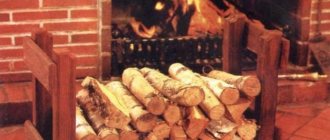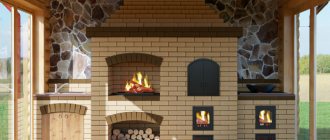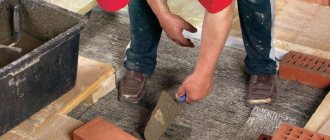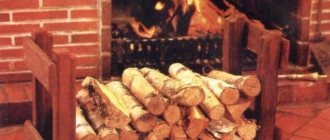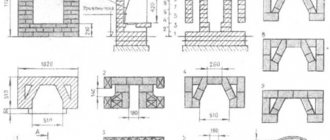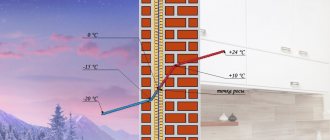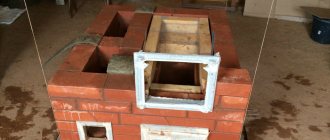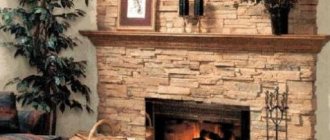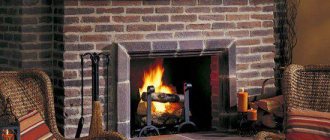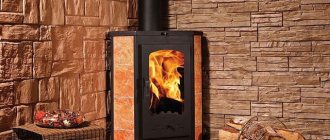Many of us associate a fireplace with a warm, cozy atmosphere and homely gatherings. Correct installation of this structure allows you to avoid the appearance of soot and soot during the burning of wood. An important role is played by its decorative finishing, which adds luxury and sophistication to the interior space.
Modern building materials help to choose the right appearance of a structure based on the chosen stylistic direction.
Experienced experts recommend choosing materials that have a moisture-resistant and washable coating. In the future, this will help get rid of traces of soot and soot. In our material you will learn possible options for decorating fireplaces with your own hands.
What should the fireplace lining be like?
Since there are many options for making a fireplace, it is difficult to name the ideal finishing material . It all depends on a lot of factors :
- fireplace type . The material for a wood-burning fireplace should be selected as carefully as possible, taking into account the constantly exposed high temperature. If you decide to go with an imitation fireplace with candles or an electric version, then the finishing requirements will not be so strict;
- fuel type The combustion temperature of different types of fuel is different, which must be taken into account when analyzing the parameters of finishing materials. For example, if you are going to use firewood, then it is important that the lining can withstand temperatures of about 9000C, but if we are talking about coal, then it is better to take a material that can withstand temperatures of about 11000C;
- installation location . If you are going to install a fireplace on the terrace, then it is important that the material has excellent frost resistance. If used in a heated room, such a requirement is not made. If the fireplace is located in a house where people visit only occasionally, then pay attention to such a parameter as moisture resistance;
- material weight . Material that is too heavy (for example, natural stone) may require strengthening the foundation, which is only possible in a private house and when installed on the ground floor. If it comes to an apartment or the upper floors of a private house, then you should definitely take into account what load the floors can withstand;
- appearance. The purpose of cladding is to decorate the fireplace, so when choosing a material you should take into account its appearance and compliance with the chosen interior style and color scheme.
Cost of finishing work
The price of finishing fireplaces directly depends on the type of finishing material and the area of the stone structure. As a rule, finishing with ceramic tiles costs much more than decorating with artificial stone.
Decorative plaster is considered a budget option. The cost of the construction composition depends on the components and special equipment that is used during the work process.
Solid fuel boilers - tips for choosing the best models and ideas for using boilers for heating (110 photos and videos)Screen for a heating radiator - a review of the best ideas and recommendations from designers for selecting screens for a heating system
- Chimneys for gas boilers - main types and step-by-step instructions for do-it-yourself installation (video + 100 photos)
No. 1. Fireplace tiles
Tile is the most popular way to decorate a home. You cannot use ordinary tiles - they will not withstand high temperatures. As a rule, the following types of ceramic tiles are used for facing a fireplace:
- terracotta tiles Made from baked clay, it has a beautiful natural reddish tint. In most of its properties, it resembles the refractory red brick from which fireplaces are made, so as the temperature in the firebox rises and falls, the tiles will expand along with it. Terracotta tiles have a smooth, coarse-grained structure. Additional pigments are not used in production, but the natural range of shades ranges from light brown to almost black;
- majolica It is also made from baked clay, but is covered with painted glaze on top, so it costs more, but also looks very beautiful. When decorating a fireplace with majolica, you need to carefully think through the sketch, because cutting such tiles is not entirely impossible, but very stupid. In addition, installation requires sufficient qualifications from the master, because the slightest flaws will be clearly visible. Due to the high cost and difficulty of working, our fireplaces are very rarely decorated with only majolica - it is usually used fragmentarily, as an accent and decoration. This solution looks great;
- clinker tiles are made from special refractory types of clay, therefore they are able to withstand high temperatures, and also have excellent frost resistance and moisture resistance. The color range is represented by shades of brown and terracotta, but thanks to various surface decoration technologies you can get very interesting options;
- Fireclay tiles accumulate thermal energy well, take a long time to cool, and retain heat well. The material will expand with the fireplace body and can withstand extremely high temperatures. Fireclay tiles are thicker than terracotta tiles.
Porcelain stoneware and tiles are sometimes included in this group , but the uniqueness of their characteristics forces us to consider each of these materials separately.
Tiling a fireplace has many advantages :
- resistance to high temperatures, the ability to “breathe” with the fireplace;
- high heat transfer and the ability to accumulate heat, which increases heat transfer;
- moisture resistance, frost resistance, resistance to sunlight;
- ease of care;
- durability;
- environmental friendliness, no odors when heating;
- chic appearance and ample choice.
It’s hard to name any downsides, except that the price of some products can be intimidating. To install tiles, you do not use ordinary tile adhesive - you need a heat-resistant compound. You can make a special clay composition yourself, but you will need to find suitable clay and experiment with proportions, so it’s easier to settle on a ready-made version.
It is better to buy tiles with a margin of 10-15%, and you can purchase not only standard format products, but also corner elements. Installation does not require special skills or the use of specific tools:
- preparatory work consists of removing the old lining from the fireplace. After this, it is also advisable to embroider the masonry seams 1 cm deep. Dust is carefully removed, the brick is moistened with water. Using heat-resistant mastic or clay mortar, minor unevenness is eliminated. If there are significant deformations, it is better to use a grinding wheel. If the brick begins to crumble, it does not hurt to install a reinforcing metal mesh with a mesh size of 1.5 cm;
- Before starting work, it is necessary to heat the fireplace for several hours so that the brick warms up sufficiently. The tile itself must remain in the room where the work will take place for 48 hours;
- the surface of the fireplace is primed, reducing dust levels and improving adhesion. The primer should be allowed to dry for about 2 hours;
- The tiles can first be laid out on the floor to understand which elements will have to be trimmed;
- The glue is prepared according to the instructions indicated on the package. It is better to mix with a construction mixer, but a drill with an appropriate attachment will do;
- The laying begins with special corner elements, if they are used. Then the lower rows are installed;
- The adhesive solution is applied with a flat spatula, and 3-4 elements are installed at once. To ensure that the distances between the tiles are the same, special crosses are used;
- After installing the tiles, the seams are grouted. To do this, use special store-bought solutions or a homemade clay mixture with sand and dyes;
- when everything is dry, it is advisable to cover the surface of the unglazed tile with a layer of heat-resistant varnish. This will simplify subsequent care.
Analyzing the numerous advantages of the material and the ease of its installation, it is easy to guess why it has gained such high popularity.
Do-it-yourself fireplace insert cladding
After you have prepared all the materials necessary for cladding, drawn up a plan and assembled a team, you need to begin the installation and assembly work itself. This instruction will help you with this:
- At the first stage of installation work, it is necessary to prepare construction tools, materials and an assembly diagram. After this, a specific place in the room is selected.
- The place must be level; if necessary, you will need to level both the floor and the walls. In addition, the floors and walls are insulated. In most cases, steel sheets with a thickness of at least 2 millimeters or tiles or stone are used.
- After completing the insulation work, it is necessary to begin assembling the portal itself. A pedestal is being assembled, on which the firebox will subsequently be installed. It is important that the pedestal has the appropriate height and width, and can also support the weight of the firebox.
- In our particular case, the portal is assembled from foam blocks, and the upper part is laid with brick, which is characterized by higher strength and a good level of fire resistance.
- Next, we install the firebox on the pedestal and fix it in the required position, making sure that it is stable. Now, we are starting to lay out the fireplace portal around it. It is important to remember that when laying out blocks, there is always a small, barely noticeable gap left near the firebox.
- Foam blocks are very easy to cut. So if you need to cut a small piece and cut out a specific part, you can do it with ease. To bond the foam blocks together, a special fire-resistant mixture is used, which is sold dry in specialized stores.
- In this form, the lining of the firebox will not look very nice, so next, you need to choose a method for finishing it. In order for the cladding to fit well on the surface of the portal, it is necessary to level it. A primer is applied alternately to the surface in several layers. After it dries, you can begin the final, final stage.
- At the last stage of work, you yourself can choose the materials with which you will decorate the surface of the portal. This can be decorative plaster, stone, tiles, tiles, mosaics. Such cladding, like all materials, must be fire-resistant and can withstand strong heat and sudden temperature changes.
Initial stage of installation Assembling the cladding from foam blocks
Portal for a firebox made of foam blocks
Laying out the side parts
The lining must support the weight of the firebox
It is necessary to leave a gap between the firebox and the portal
The firebox inside must be stable
Assembling the cladding from above
Securing the top
Chimney outlet
Creating an airtight structure Fitting the cladding to the ceiling Decorating and leveling
When choosing cladding, consider not only your individual wishes and preferences, but also the style of the room, furniture and other features of the room. Fireplace lining is not only a decorative component, but also an additional screen that can reflect accumulated heat into every corner of the room.
DIY fireplace installation:
No. 2. Natural and artificial stone for facing the fireplace
The stone in the decoration of the fireplace looks as organic as possible and may even resemble the Middle Ages, but the perception of the portal will largely depend on what type of stone is chosen (or what type of artificial stone imitates).
As for natural stone the following rocks are used for cladding the fireplace :
- granite is a hard rock, has a wide range of shades, does not collect scratches, and is easy to care for. The surface can be either wild (with “ragged” edges) or smooth polished;
- Marble is the most popular stone for finishing a fireplace. It has a huge range of shades, is relatively inexpensive, and looks great;
- Shell rock captivates with its low price and easy processing. Looks great, but isn't very durable. It has a soft porous structure, so soot particles will gradually accumulate in the pores, spoiling the appearance. If you light the fireplace infrequently, then shell rock will do;
- limestone and sandstone have a sufficient number of shades, but cannot boast of strength, and soot may remain in the pores of the material;
- slate - durable and beautiful material, but its peculiar appearance does not allow us to call the breed universal.
Natural stone is heavy and quite expensive, so today its artificial counterpart is actively used. Natural stone for fireplaces is sold in the form of slabs . Often this format is called stone tiles or flagstone . Since the shape of such tiles is usually different, it is better to first lay out all the elements on the floor so that you can select and process all the elements in time. When installing natural stone, you cannot do without a mesh, otherwise the finish risks collapsing.
Artificial stone is made from Portland cement with the addition of expanded clay or from gypsum. The mass is poured into molds, which are obtained by making casts from natural stones. Such products are cheaper, weigh less, can have any color and shape, and in terms of strength and other performance qualities they are practically not inferior to natural stone, and some types are even superior.
The main advantages of facing a fireplace with stone:
- resistance to high temperatures;
- environmental friendliness and safety;
- chic appearance;
- durability;
- for artificial stone, ease of installation and processing, low weight, price;
- for natural stone – the uniqueness of each element.
The technology for laying stone is similar to the installation of tiles described above. It is not necessary to leave gaps of the same size between the stones (as is the case with tiles), so everything will be even simpler. For installation, use a special heat-resistant adhesive for stone. It is recommended to additionally secure the heaviest stones with anchors. Otherwise, everything is the same as with tiles. First, the surface is prepared, primed, glue is diluted, then the installation of stone begins from the bottom row. Before starting work, it is recommended to heat the fireplace and lay the stone on the floor to assemble the future “drawing”. In the case of natural stone, the elements may have a slightly different shade. This must be taken into account in advance. It looks best when the bottom rows are slightly darker than the top rows. If desired, the stone is coated with heat-resistant varnish.
Choosing a finishing method
Just the mention of a fireplace in a casual conversation can make a person feel warm. And all because an island of comfort with tongues of living flame immediately appears before your eyes. Where it is very pleasant to while away the cold winter evenings.
Previously, it was believed that only owners of private houses could afford such luxury. Since safety requirements are fully implemented only in such buildings. But with the advent of imitations, electric fireplaces and bio-fireplaces, it became possible to create a comfortable place to relax in any apartment in a multi-storey building.
Moreover, both a real working fireplace and a decorative stylization for it are subject to cladding. And if in ancient times only tiles were used to decorate the hearth, today the choice of materials is truly enormous. Therefore, the developer will involuntarily have to rack his brains about how to veneer the fireplace.
Since the range is really large, it is extremely difficult to name the ideal material. After all, in addition to aesthetics, it is necessary to pay attention to the practical side. Find out how well the chosen option suits the existing design. Because you will need to take into account a lot of factors.
Fireplace in the living room Source ceramicadecor.ru
For example, the type of fireplace and type of fuel. If wood burns in a real hearth, its walls will heat up to very high temperatures. Therefore, a special cladding is needed - heat-resistant. And it’s best to take the material with a margin to spare. Suddenly you want to heat the hearth with coal. And its combustion temperature is higher than that of firewood.
Or provide conditions at the location. It happens that a fireplace is installed on the terrace and used occasionally. The rest of the time the fireplace is in a cold room, where the ambient temperature can drop below zero. It goes without saying that the finishing material must be frost-resistant.
Any combustion releases products such as soot and soot. They settle on the surface and not only spoil the appearance of the room. If you want to lean your elbows on the mantelpiece, then this is fraught with damage to your clothes. Not to mention that you will have to wash it very carefully afterwards. Therefore, we need a cladding that is not afraid of water and is easy to clean regularly.
Fireplace lined with clinker tiles Source festima.ru
You also need to select a material that will fit perfectly into the overall design of the room. After all, no one has canceled simple design rules. And even if you involuntarily disturb the interior, then from the main accent of the room, the fireplace will literally turn into an eyesore.
But most often you have to take into account the weight of the materials. After all, finishing a fireplace with porcelain stoneware is completely impossible if it is a decorative imitation made of cardboard. And not every active fireplace can be covered with natural stone. The significant weight of these materials requires the construction of a reinforced foundation for the structure.
True, such difficulties await only those who want to decorate their recreation area with special luxury. But artificial stone or tiles are light enough to be glued even to a plasterboard frame. And the price will be much cheaper than natural materials.
And if you opt for plaster, you can save even more. And almost any conditions will suit her. And you don’t have to worry about the location, since this material is not afraid of temperature changes.
Plaster on the fireplace Source austroflamm.lv
No. 3. Brick fireplace decoration
This is not even finishing in the traditional sense of the word. In this case, there is no question of installing some kind of facing material on top of the fireplace. The brick from which the fireplace is constructed is finished accordingly. This is both the simplicity and complexity of the method.
If you initially planned not to use any additional facing materials, then when laying the fireplace, the mortar must be laid so that 5-7 mm remains to the outer edge of the brick. Later this void will be filled with decorative grout. If the fireplace has already been built, then you can grout the joints in order to subsequently use grout of a certain color. The brick can be left untouched, but can be sanded or chamfered. Such work should be performed by an experienced specialist. Not every stove maker is ready to take on this, so it’s better not to do this type of cladding yourself . Brick can be treated with hydrochloric acid solution - this will give the material a more saturated color.
There is a more standard way. This is finishing with ceramic facing bricks . The material can withstand high temperatures, looks great and expands the possibilities of decoration. The masonry is not much different from the laying of ordinary bricks. True, you will have to ensure that the seams are even (as is the case with tiles), and then seal them with heat-resistant mastic.
Less popular methods
It’s worth talking right away about decorating the fireplace with tiles. The method is quite old, but today it is very rarely used. Firstly, such finishing is possible only when constructing a fireplace. You cannot cover an already finished hearth with real tiles.
Secondly, the installation is so complicated that it requires a highly specialized specialist. Tiles are already a very expensive pleasure. And the involvement of a master in the work makes such a fireplace truly “golden”.
You can line the fireplace with brick. In this case, there are two ways. They take plastic molded ceramic bricks and lay out the external walls. In the second case, the main masonry is refined. The seams are deepened and cleared. Then they are filled with special compounds.
The brick itself is also subjected to various treatments. Hydrochloric acid solution for color saturation. And before that, each element is polished or chamfered. The complexity of such finishing is so great that not every stove maker will take on the job.
No. 4. Cladding the fireplace with porcelain stoneware
Porcelain tile is not a natural material, but it contains natural components. A special technology makes it possible to create a material that is not inferior in strength to natural stone. The composition includes clay, mica, sand, metal oxides, feldspar and granite or marble chips. Porcelain tiles can replicate the pattern of any natural stone and are distinguished by a minimal number of pores , which explains its performance qualities.
Advantages of the material:
- wear resistance and high strength;
- ability to withstand high temperatures, so porcelain stoneware is definitely suitable for facing a fireplace;
- moisture resistance and frost resistance;
- environmental friendliness;
- ease of maintenance, resistance to mechanical damage and chemically aggressive substances;
- a huge variety of colors and textures. Porcelain tiles can copy ceramic tiles, any type of stone, majolica and clinker.
Porcelain tiles cost a little more than terracotta tiles and can compete with them. The main disadvantages: higher weight and relative difficulty in processing - cutting porcelain stoneware is not as easy as tiles. However, for cladding fireplaces, slabs of material with a small thickness are used, so there will not be a significant load on the floors. If cutting is difficult to do at home, you can entrust this task to special companies.
Porcelain tiles are installed using glue or a metal frame. The first method is virtually identical to the tile installation described above, so it makes sense to dwell in more detail on the second option:
- A frame is created from a metal profile around the perimeter of the fireplace; anchor bolts are used for fastening. The profiles are connected with self-tapping screws. The pitch between the profiles must correspond to the format of the porcelain stoneware;
- using special brackets, the porcelain stoneware is fixed to the frame;
- the space between the brickwork of the fireplace and the porcelain stoneware must be filled with clay mortar with the addition of sand and crushed stone;
- porcelain stoneware joints are treated with a composition of clay, sand and color pigment;
- After finishing the work, the fireplace must be heated for a couple of days - this way the clay will bake and form a denser layer with a high degree of heat capacity.
This method is convenient for covering fireplaces with a lot of unevenness, defects and slopes, because with the help of a metal frame and mortar they are all leveled out.
Types of finishing materials
The following types of finishing materials are used for decorative finishing of fireplaces. These include:
Heat-resistant plaster. The composition uses fire-resistant components that can cope with sudden changes in temperature. Special pigments, which are combined with the building composition at the initial stages of finishing work, help to add bright colors.
Ceramic tile. This type of building material helps to achieve complex textured lines and add decorative details to the interior space.
Decorative rock. Most often, artificial stone covering elements are used for finishing work. It consists of polyurethane elements that are attached to a special adhesive. This artificial decoration of the fireplace is no different from natural materials.
Modern pigments and technologies help achieve complex color shades and depth of textured lines. All these elements will fit perfectly with the chosen stylistic direction.
No. 5. Cladding the fireplace with plaster
The easiest and most cost-effective way to decorate a fireplace is to cover it with a layer of plaster. Moreover, with the help of plaster you can create both a smooth and decorative relief surface (using various spatulas, brushes, rollers and even household items, such as plastic bags, you can achieve an incredible result). With proper skill, even the texture of a stone can be conveyed. Plaster can be painted and drawings can be made on it. It is very easy to change the appearance of a plastered fireplace by simply repainting it. In addition, the plaster weighs a little , so it does not bear a significant load on the floors. The finish is durable and practical , if, of course, you choose the right composition.
For plastering fireplaces, it is better to use the same composition that is used when working with stoves. The easiest way is to buy ready-made material, to which the manufacturer has added the necessary additives and additives. For those who know how and like to do everything with their own hands, there is a more complex method - preparing the plaster mortar yourself. Its composition includes clay, sand and lime, but in order for the solution to have the necessary performance qualities, it is important to correctly select the fat content of the clay and the proportion of clay and sand - all this is done through experimentation. To be sure that such plaster will not crack and will withstand heat, you will need experience.
Many manufacturers offer both base and finishing plaster. The first is applied in a layer of 10 mm, intended for rough finishing and preparing a flat base. The finishing layer is applied with a thickness of 3 mm.
The process of plastering a fireplace is not much different from plastering walls:
- all old cladding, if any, is removed;
- to increase adhesion, it is better to unstitch the masonry seams to a depth of 0.7-1 cm. A chisel or screwdriver is suitable for scraping out the mortar;
- It is better to seal the cracks with heat-resistant sealant;
- if the walls of the fireplace are relatively flat (the height differences and the depth of the depressions do not exceed 5 mm), then you can wet the brick and proceed to applying plaster. For more significant unevenness, reinforcement with reinforcing mesh will be required. It is attached to the masonry brick with nails, on the heads of which metal washers are placed;
- Before starting work, it is better to heat the fireplace so that the brick acquires the dimensions that will be characteristic when the fireplace is in operation. If the base is not warm, the plaster may crack during the first fire;
- The prepared plaster solution is applied with a spatula and leveled along the beacons. It is recommended to apply at least two layers of plaster, with each subsequent one applied after the previous one has completely dried. The finishing layer can be leveled with a spatula. You can create a certain relief on it.
For additional decoration you can use paints . Organosilicon ones are best suited because they tolerate heating well to high temperatures. The hearth can be painted in a single color or you can draw certain patterns on it - it all depends on your imagination, skills and interior.
Use of thermal insulation materials
Thermal insulation is necessary if the combustion chamber will perform a purely decorative function. The main requirements for thermal insulation include the following:
- The presence of slight hygroscopicity. Such a composition should not absorb or absorb moisture. Make sure that condensation does not form inside the material. This may lead to loss of filler performance;
- Melting occurs exclusively under the influence of very high temperatures. The use of such a base with a high melting point is necessary to comply with fire safety standards and regulations.
Zones with insulation
Performing thermal insulation of a heating installation
Mineral wool for thermal insulation of fireplaces
Of course, facing fireplace inserts can also be done using other coatings. In this article, we have collected the most common materials, which are recommended to be used by leading experts and professionals. When making a choice, consider the cost, quality and operational features of the coating. This will allow the cladding to be completed with the highest possible quality, ensuring the structure’s efficiency and durability.
No. 6. Tiles
Tiles are, in fact, the same terracotta tiles or majolica. The difference lies in the special structure. The tiles have a rumpa, a square hollow projection that holds the tiles in place during installation. Rumpa is also important for another purpose - it helps to retain heat. Tiles can be used to decorate a fireplace only during its laying. If the moment is missed, you will have to choose another finishing method.
Tiles have the same advantages as tiles. The choice of colors is huge, there are very sophisticated samples that will bring special chic to the interior.
Installation of tiles is carried out in this way:
- The pump is filled ½ full with a mixture of clay and broken bricks, and the so-called crutch, thick (5 mm in diameter) wire with a bend at the top;
- a flexible soft wire is attached in the middle of the crutch, which will later be embedded in the brickwork;
- the pump is filled to the brim with clay mixture;
- As the laying progresses, the tiles are installed and the wire is hidden in the seam. The individual parts are connected to each other using U-shaped brackets.
It is difficult to do such installation yourself, which makes installing a fireplace a more expensive pleasure. In addition, the material itself is more expensive than regular tiles.
No. 7. Wood fireplace cladding
Probably, this method of cladding may seem impossible to many, because it is no secret that wood is very afraid of fire. However, if you follow certain rules, you can decorate your home with warm and cozy wood - such a fireplace will look great in living rooms designed in a classic style. Wood is an aesthetic, durable and natural material that has a special aroma. To enjoy these benefits, you will have to meet a number of conditions:
- It is necessary to choose rocks that are as resistant to high temperatures as possible and are not very susceptible to deformation due to constant temperature changes. It is clear that all types of wood, without exception, burn, but those that have a denser structure ignite much later. Oak, hornbeam, maple, and cherry are suitable for finishing a fireplace . Larch has average density, but pine, cedar and linden are not worth considering at all;
- impregnation is required to prevent fire. These are fire retardant-based products that penetrate well into the wood structure;
- It is better to place the tree as far as possible from the hearth . Therefore, consider partially finishing the wood or create a niche for installing the cladding 5-10 cm larger than the brick frame. Then the wood will heat up within acceptable limits;
- In any case, it is better to cover the firebox with a protective screen so that sparks do not fall on the wood.
Interior and exterior finishing
Finishing the fireplace with stone is the most popular option. This material is environmentally friendly and lasts for quite a long time. However, before you begin cladding, you need to familiarize yourself with a number of characteristic features and rules.
A decorative fireplace, like any other, consists of a portal and a firebox. The hearth or combustion chamber is intended for storing fuel and burning it. For false fireplaces, this element allows you to recreate an imitation of combustion. The portal performs a decorative function and frames the hearth itself. It can have any location, dimensions and finish.
A three-sided fireplace is a profitable and original solution for any interior of an apartment or house. It allows you to observe the fire burning in the firebox or its imitation from any angle. The design consists of transparent tempered glass.
Such a three-sided hearth can be located either in an artificially created wall or plasterboard partition, or in the center of the room. It is important to note that island placement is only suitable for large bedrooms and living rooms. The shape of the firebox can be very diverse: round, square, rectangular, spherical, cone-shaped.
A three-sided glass fireplace is mainly made and developed in modern directions, such as high-tech, art deco, minimalism, modernism.
